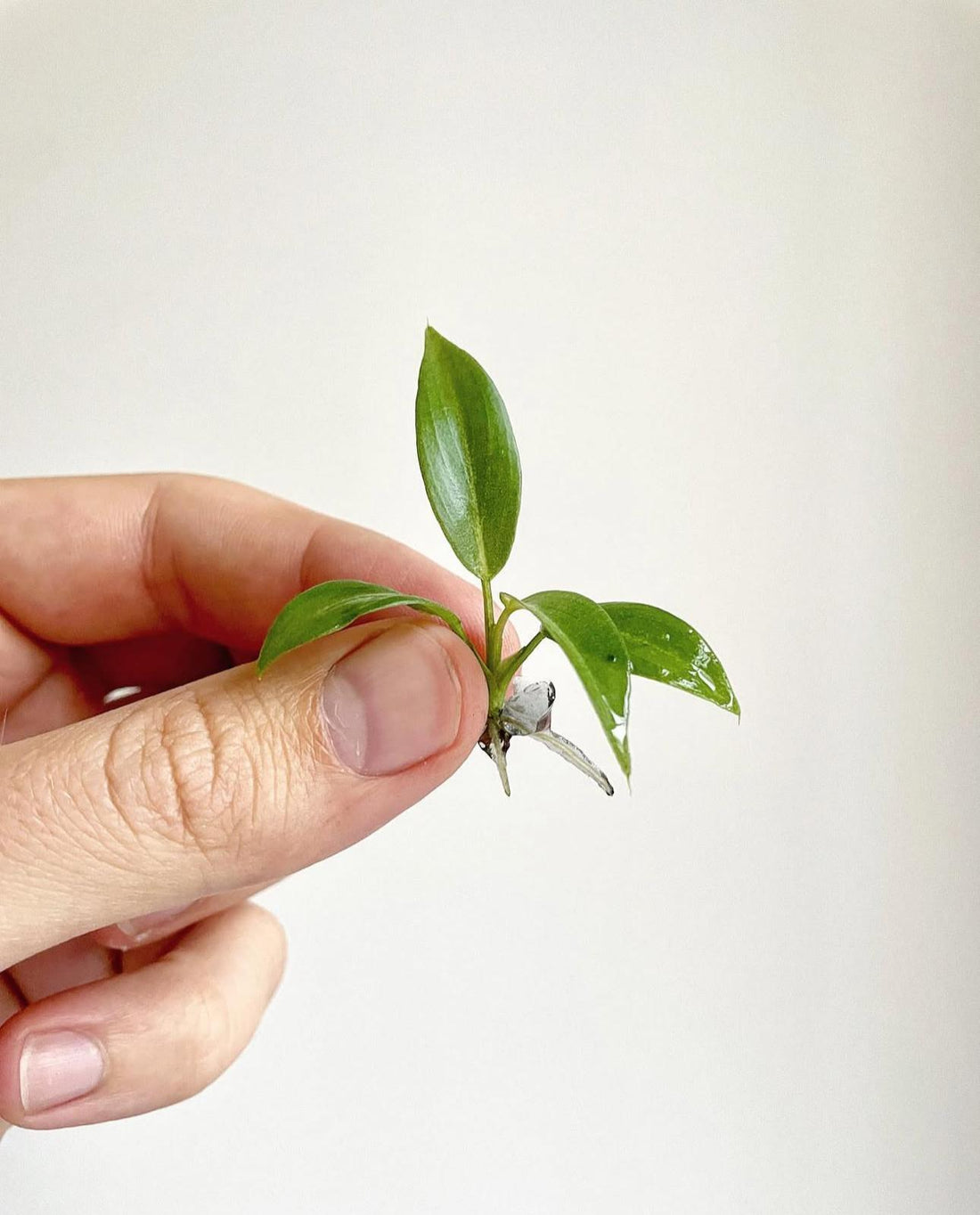
The Magic Behind Tissue Culture: Bringing Tropical Plants to Life
Aktie
If you’ve ever been blown away by a rare Monstera or coveted a particular philodendron variety, you’ve likely heard about tissue culture. It’s one of the coolest, most high-tech ways to propagate tropical plants, and it’s revolutionizing how we grow, conserve, and introduce new plant varieties to the world.
But how does it work? Is it just for serious plant collectors or labs? Can it benefit regular plant lovers like you? Let’s dive into the magic of tissue culture, and how it’s shaping the future of our favorite tropicals.

What Is Tissue Culture?
Tissue culture is a process of growing new plants from small pieces of a plant’s tissue, usually cells or plant buds. This is done in a sterile, controlled environment where the plant material is placed on a nutrient-rich medium that encourages growth and multiplication. Essentially, it's like giving a plant a lab-grown “boost,” creating genetically identical clones of the original plant.
This technique is often used for propagating rare or hard-to-find plants, ensuring that growers can produce large quantities of healthy, uniform plants without relying on traditional seeds or cuttings.
Why Should You Care About Tissue Culture?
If you’re a tropical plant lover, tissue culture is huge for several reasons:
🌍 Conservation and Preservation
Tissue culture is an incredible tool for preserving rare and endangered plant species. It can store and propagate plants that are hard to grow from seeds or cuttings, ensuring their survival. Plus, it helps eliminate the need to take plants from their natural habitat.
💡 Cloning the Best
Ever wish you could clone your perfect plant? With tissue culture, it’s like hitting the “copy” button on your favorite tropicals. All the plants grown from the same tissue are genetically identical, meaning they’ll have the same characteristics—perfect for replicating a plant that has exceptional traits, like unique leaf patterns or faster growth.
🌱 Mass Propagation
With tissue culture, thousands of plants can be propagated from just one tiny piece of tissue. This is a game-changer for growers and nurseries, as it allows them to meet the demand for popular plants without having to wait for long grow cycles. Want a sea of Monstera Albo or rare philodendron varieties in your local nursery? Tissue culture can make it happen faster.
The Process of Tissue Culture: How It Works
Now that we know what tissue culture can do, let’s talk about how it works, step-by-step. It’s a fascinating, precise process:
The process begins with a small, healthy piece of plant tissue. This could be a leaf, stem, or even just a tiny piece of a growing tip. The key is that the tissue has to be clean and disease-free to ensure the plant can thrive.
Next, the tissue is sterilized to eliminate any bacteria, fungi, or pathogens that might be lurking. This is done by dipping the plant material in a sterilizing solution (like bleach or alcohol), ensuring that only the clean plant cells remain.
Once sterilized, the tissue is placed on a special nutrient-rich medium (a gel-like substance containing sugars, minerals, vitamins, and plant hormones). These nutrients give the plant tissue everything it needs to grow, while the plant hormones help it form shoots and roots.
The tiny plant tissue begins to divide and grow—sometimes rapidly! The plantlet will form several new shoots, and after a few weeks or months, you’ll have multiple little plants, all genetically identical to the original.
Once the plantlets have developed enough shoots, they’re moved to a different medium where they begin to grow roots. This part of the process mimics what happens when a cutting roots in soil but in a much more controlled, efficient manner.
Finally, the newly-rooted plants are gradually introduced to a normal growing environment. This process, called hardening off, helps them transition from the sterile, controlled environment of the tissue culture lab to the real world, where they can thrive in regular pots and under natural light.

Tissue Culture in the Tropical Plant World
Tropical plants, like monstera, anthuriums, and philodendrons, are some of the most popular species being propagated through tissue culture. Since many tropicals are rare or slow-growing from seeds, tissue culture offers a way to meet the high demand for these plants without over-harvesting from the wild.
Some of the most famous varieties—like the Monstera Albo Variegata, Philodendron Pink Princess, and Philodendron Glorious—have been propagated through tissue culture. This has made them much more accessible to the average plant collector, who otherwise might struggle to find a cutting or affordable plant.
Is Tissue Culture Just for Professional Growers?
While tissue culture is primarily used by professional nurseries and growers, it's starting to make waves in the hobbyist community too. A lot of plant lovers now have access to tissue-cultured plants through reputable plant stores and online sellers, who offer these high-quality, lab-grown specimens at reasonable prices.
If you’re a collector, knowing that your new plant has been grown through tissue culture might even help you feel a bit more confident about its health and long-term viability. These plants are generally free of pests and diseases, and since they’re propagated in a sterile environment, they’re less likely to have stress-related issues.
Final Thoughts
Tissue culture may sound a bit “sci-fi,” but it’s truly a plant lover’s dream come true. Whether it’s helping us conserve endangered species, making rare plants more accessible, or simply speeding up the propagation process, it’s a powerful tool that’s shaping the future of tropical plants.
As the plant world continues to evolve, tissue culture will play an even bigger role in the growth and accessibility of our favorite tropicals. In the meantime, we’ll keep enjoying the beautiful, lab-grown specimens that make their way into our homes, knowing they were grown with a little science, a lot of care, and just the right conditions to thrive.
